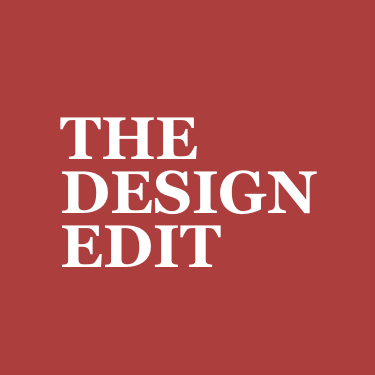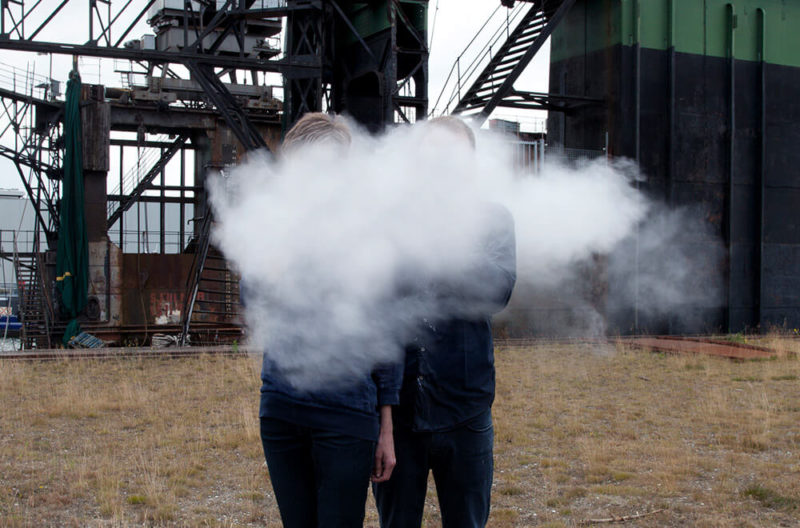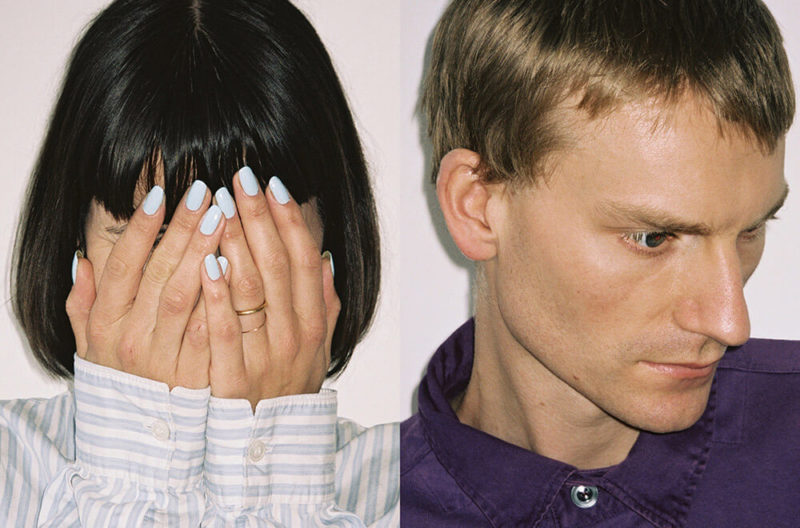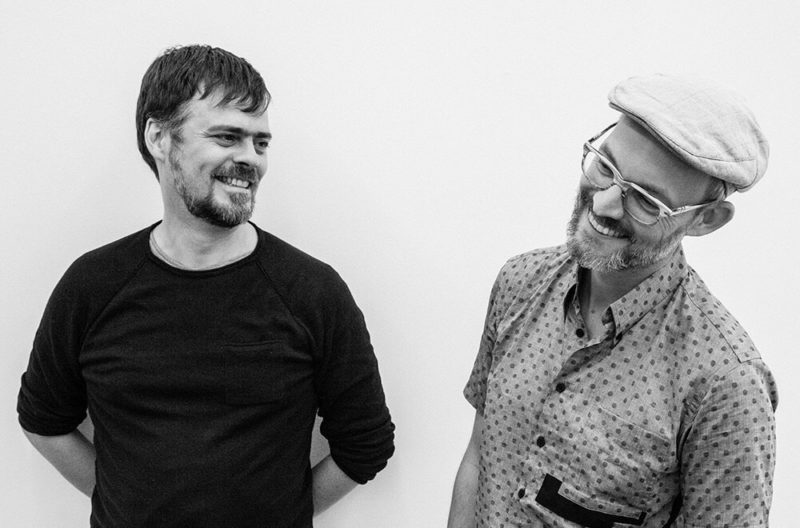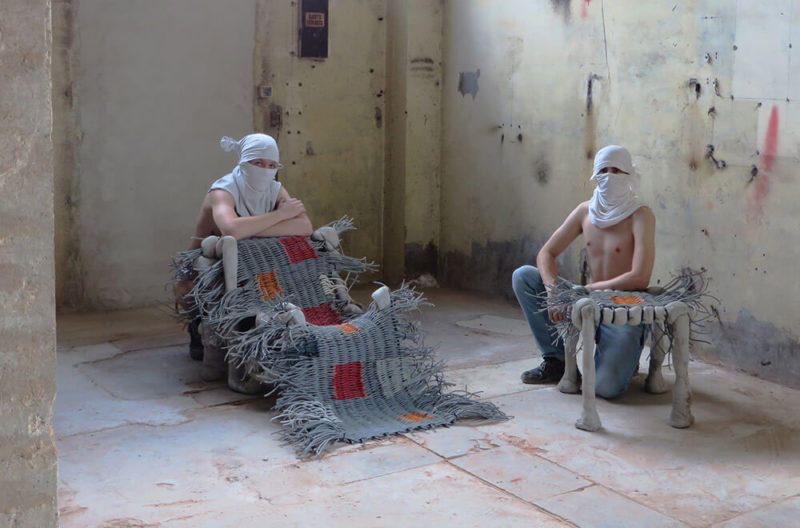Design Duos / Aki+Arnaud Cooren
Drawing on nature, collaboration and context, this Japanese-French partnership creates work that moves people out of their sensory comfort zone, to embrace the present moment.
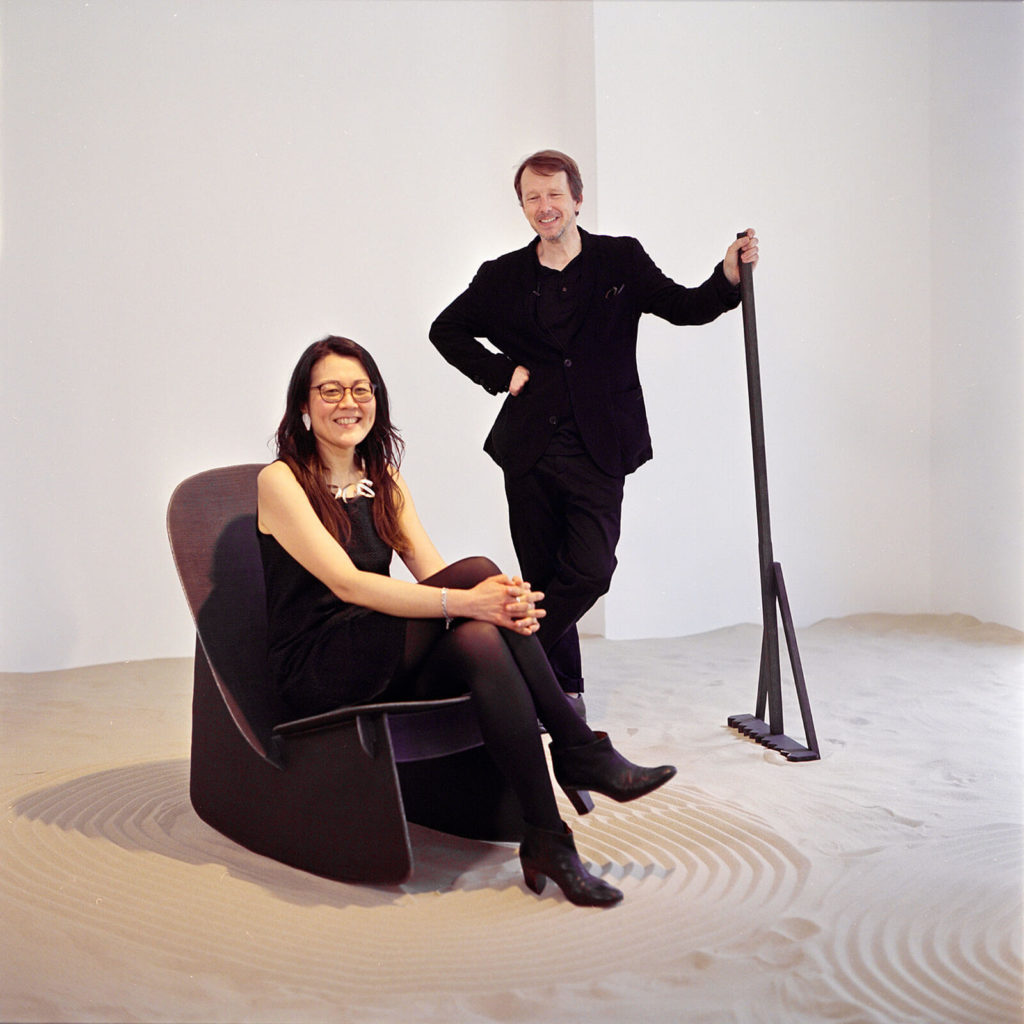
Aki+Arnaud Cooren
PHOTOGRAPH: Teddy Freeman
DESIGN DUO AKI and Arnaud Cooren met at design school in Paris. Aki, born in Paris but brought up in Tokyo, is the daughter of master jewellery makers. After a year in the United States, she came to Paris to study interior and product design at the École Camondo. There she met Arnaud, from northern France, who had initially trained in contemporary art in Belgium. Together, since founding their studio in 1999, they have forged a distinctive approach to design – understated, thought-provoking, perfectionist, responsive to nature and driven by the desire to introduce an element of surprise into design. While they have worked for brands as various as Shiseido, Artemide, L’Oréal, Manufacture nationale de Sèvres, Yamagiwa, Saint Louis, Boffi Bains, Cartier and Vertigo Bird on interior, product and furniture design projects, they also make limited edition pieces.

Aki+Arnaud Cooren, space design for Gallery of manufacture of Sèvres in Paris
COURTESY: Aki+Arnaud Cooren / PHOTOGRAPH: Lorenz Cugini
They have won many prizes including the 2017 Liliane Bettencourt Prize pour l’intelligence de la main – Dialogues (with the craftsman David De Gourcuff, for the low chair ‘Tiss-Tiss’). This April they open their first solo show with Carpenters Workshop Gallery, in London, launching their ‘Tiss-Tiss’ collection.
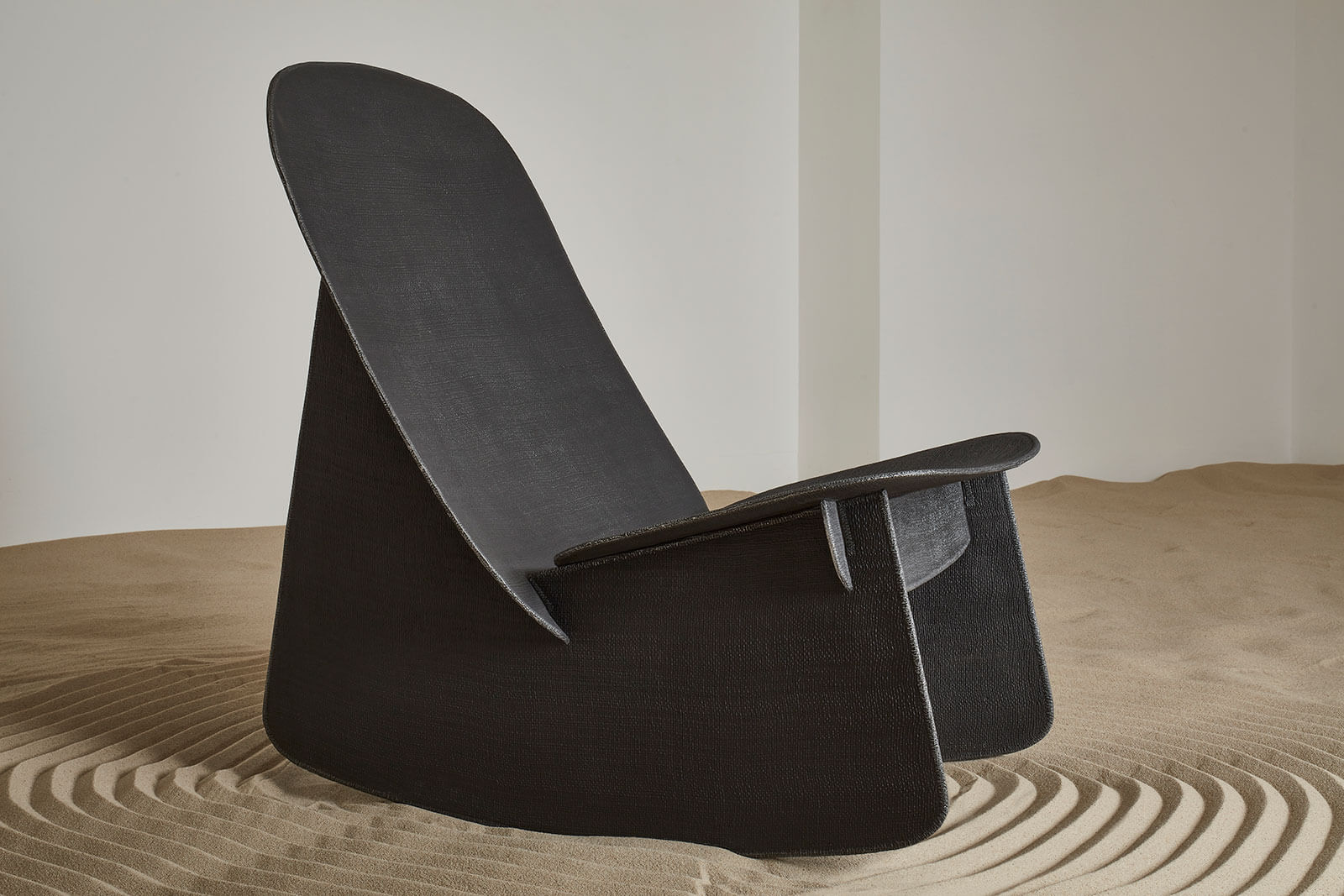
Aki+Arnaud Cooren, ‘Tiss-Tiss Rocking Chair’, 2019
COURTESY: Carpenters Workshop Gallery / PHOTOGRAPH: © MarkCocksedge
The Design Edit (TDE): How did you meet?
Aki+Arnaud Cooren (Arnaud): I’d been at a more experimental art school, doing installation and conceptual art, I then enrolled at the École Camondo in Paris to study product design and interior architecture. I met Aki the first week there.
Aki+Arnaud Cooren (Aki): We’ve been together twenty years.
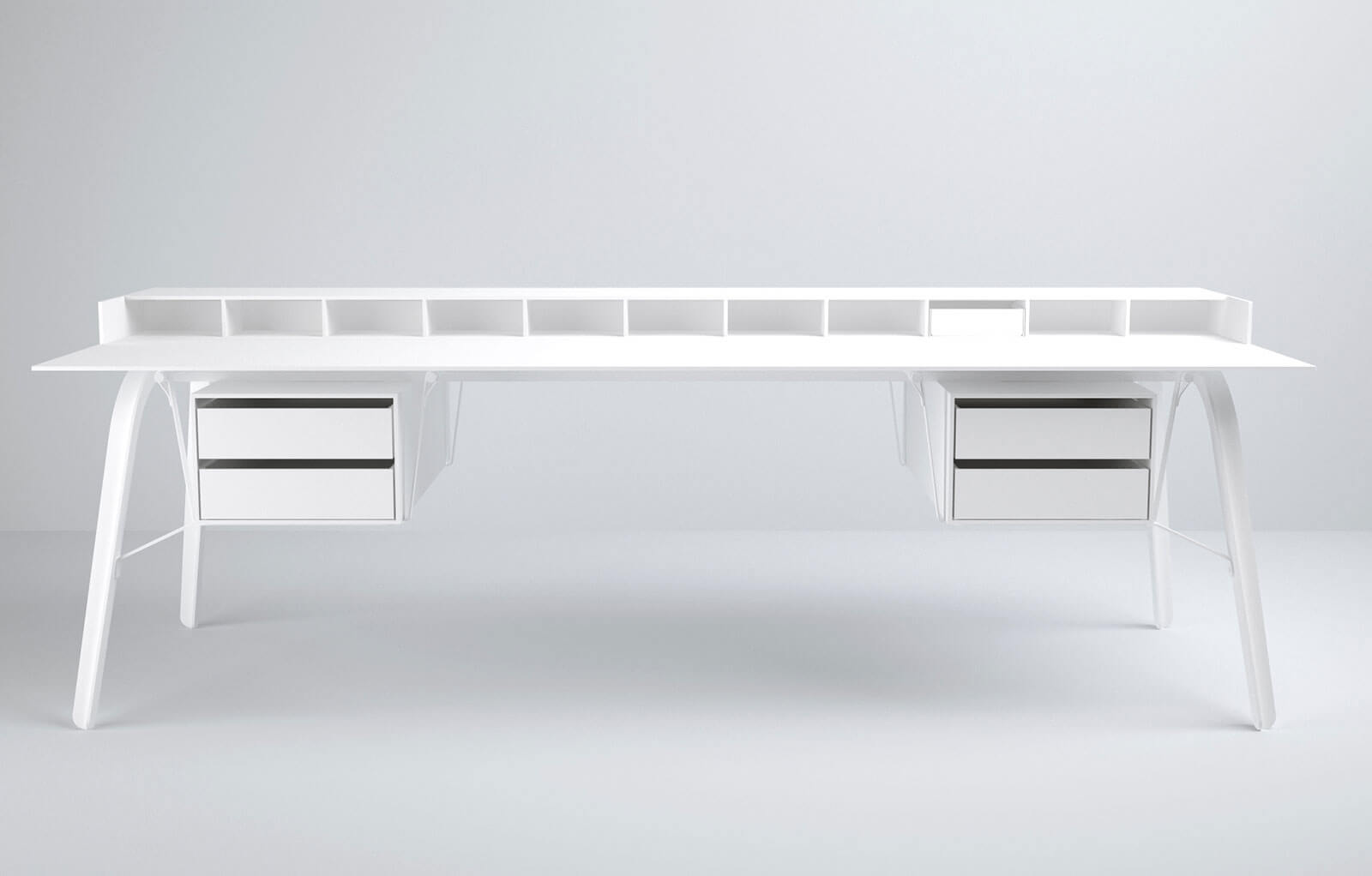
Aki+Arnaud Cooren, ‘Desk L’, 2012
COURTESY: Aki+Arnaud Cooren
TDE: What drew you to work together?
Aki+Arnaud Cooren (Aki): We had already started working together at college. After graduation, we wondered what to do next and decided to do something together. That was the start. We were young.
Aki+Arnaud Cooren (Arnaud): Aki was born into a family where her parents worked together.
Aki+Arnaud Cooren (Aki): Yes, my parents are creators, so I grew up in a very artistic environment, it was a natural choice for me to work with my partner.
Aki+Arnaud Cooren (Arnaud): We really needed to be in the same environment to understand each other, and to be together. Aki and I were always going into galleries and noticing that we were similar – not just in taste but in opinion. In a room with twenty pieces, for instance, we are always drawn to the same piece.
Aki+Arnaud Cooren (Aki): Also we are very complementary. Arnaud is maybe more feminine and Japanese than me! Maybe I am more masculine and European.
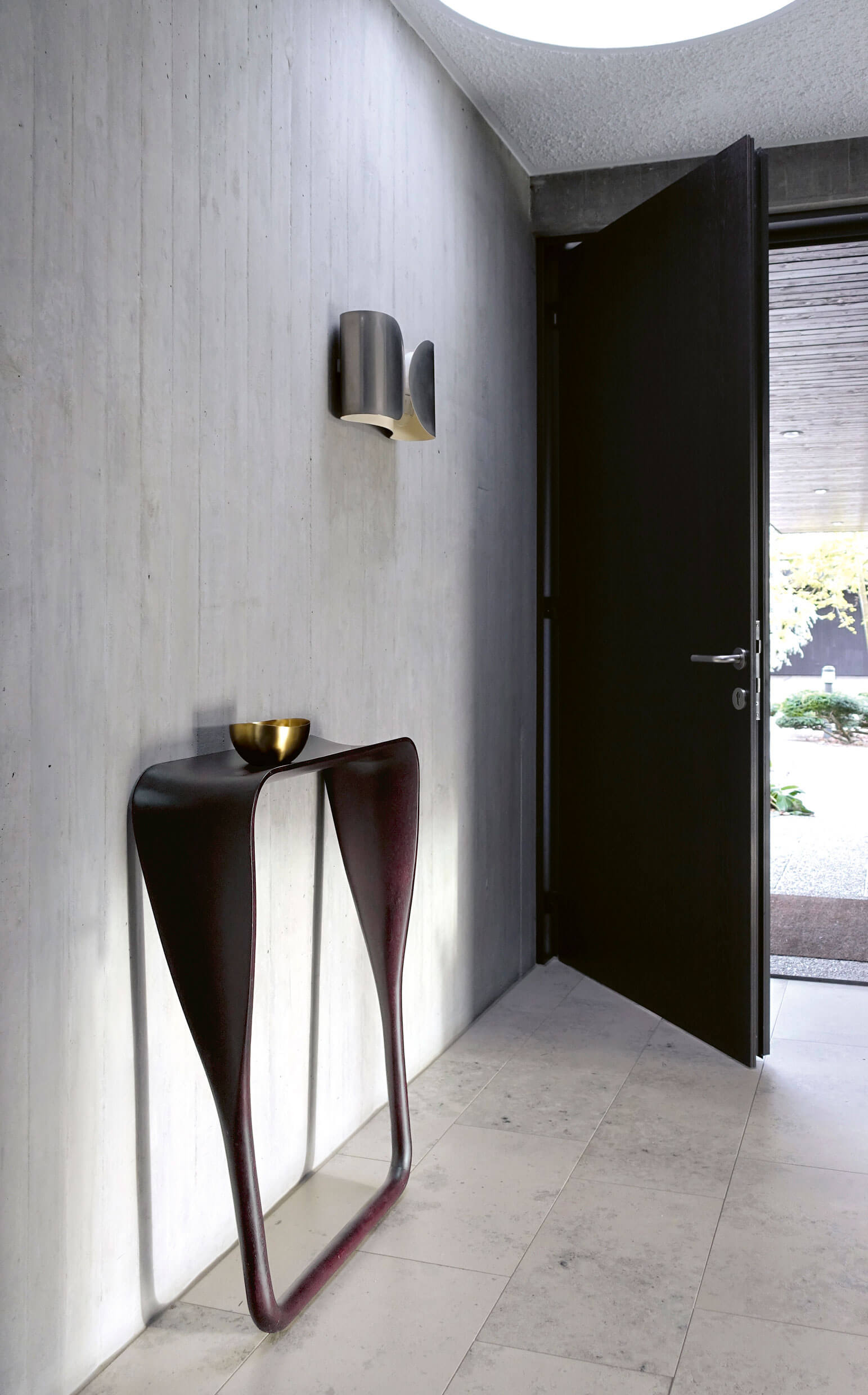
Aki+Arnaud Cooren, ‘Tadaima’ console for ClassiCon, 2017
COURTESY: Aki+Arnaud Cooren / PHOTOGRAPH: © Thomas Biswanger
TDE: How did your career develop? What were the first works you collaborated on?
Aki+Arnaud Cooren (Arnaud): I can remember one early work we did for an exhibition at college, about Eames’s works. It was nice to meet each other on this project. We had just one computer between us, an old Apple Mac, and we had to work around the clock, taking turns, because we didn’t have much time. We didn’t even have time to talk that much, it was really fluid.
Aki+Arnaud Cooren (Aki): For a while we were also doing interior design and scenography.
Aki+Arnaud Cooren (Arnaud): Then we started to make objects because we needed certain pieces – so we started with Artemide, making a few lamps. From these technical things we were increasingly inspired to reveal the true nature of the material we were using, whether it was wood, glass or metal.
Aki+Arnaud Cooren (Aki): We made a sideboard where the line of the drawer, on the left and the right side was the same as the grain of the wood. It was an exercise we did for an exhibition of French design, Nouvelle Vague (New Wave): the new French domestic landscape, in 2011, at the French Institute in Milan, which went on to Cologne and Toronto.
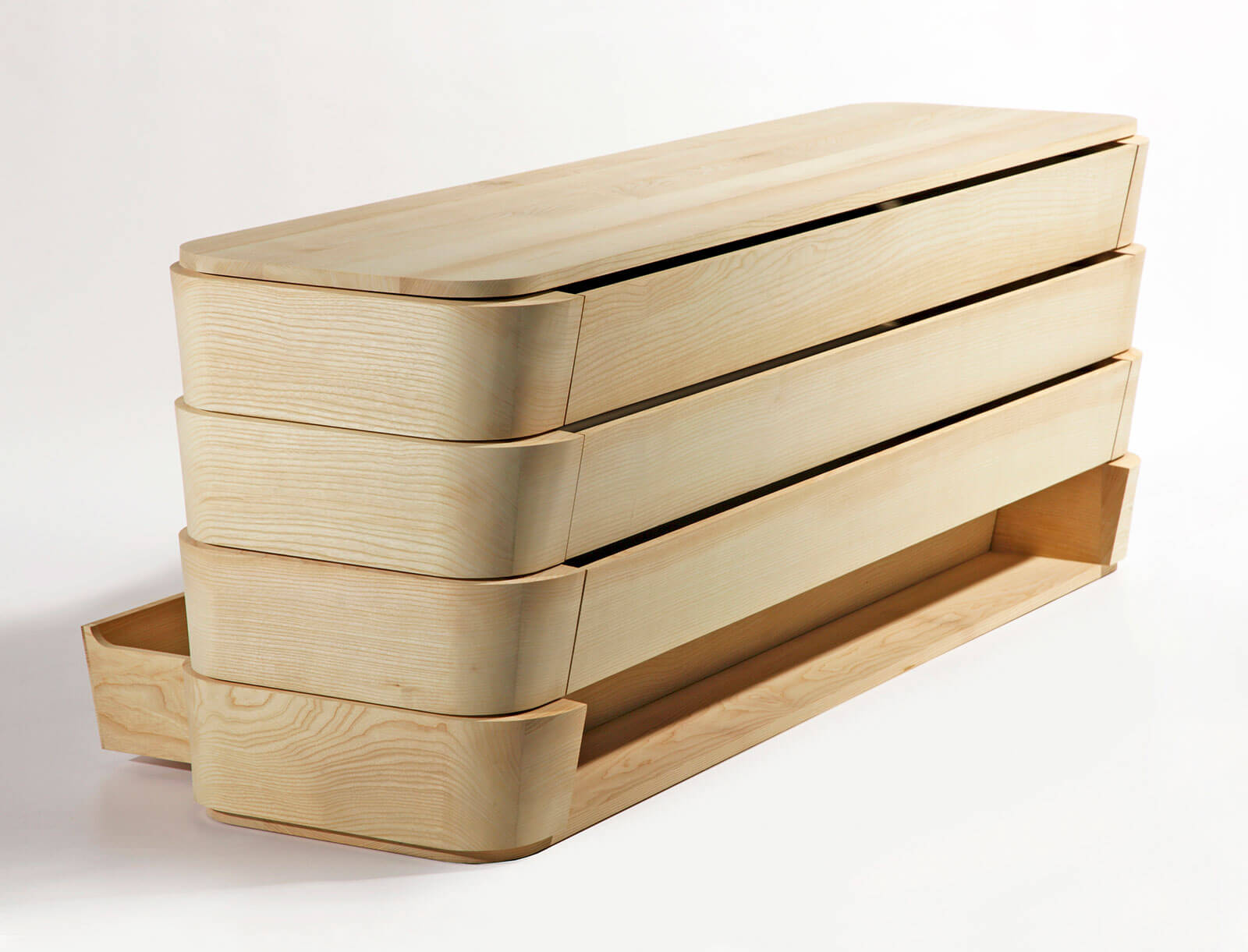
Aki+Arnaud Cooren, ‘Yabane’ from Walnutsgroove, 2011
COURTESY: Aki+Arnaud Cooren
Aki+Arnaud Cooren (Arnaud): That was one of the first times we went to the limits of the material. We did another piece, a vase, ‘Tourbillon’, that was more conceptual – a vase without water. Inside it is a vortex, and outside it is like a tube, made of borosilicate glass, connecting one piece without tension to another piece with a lot of tension. There is one in the glass museum of Shanghai.
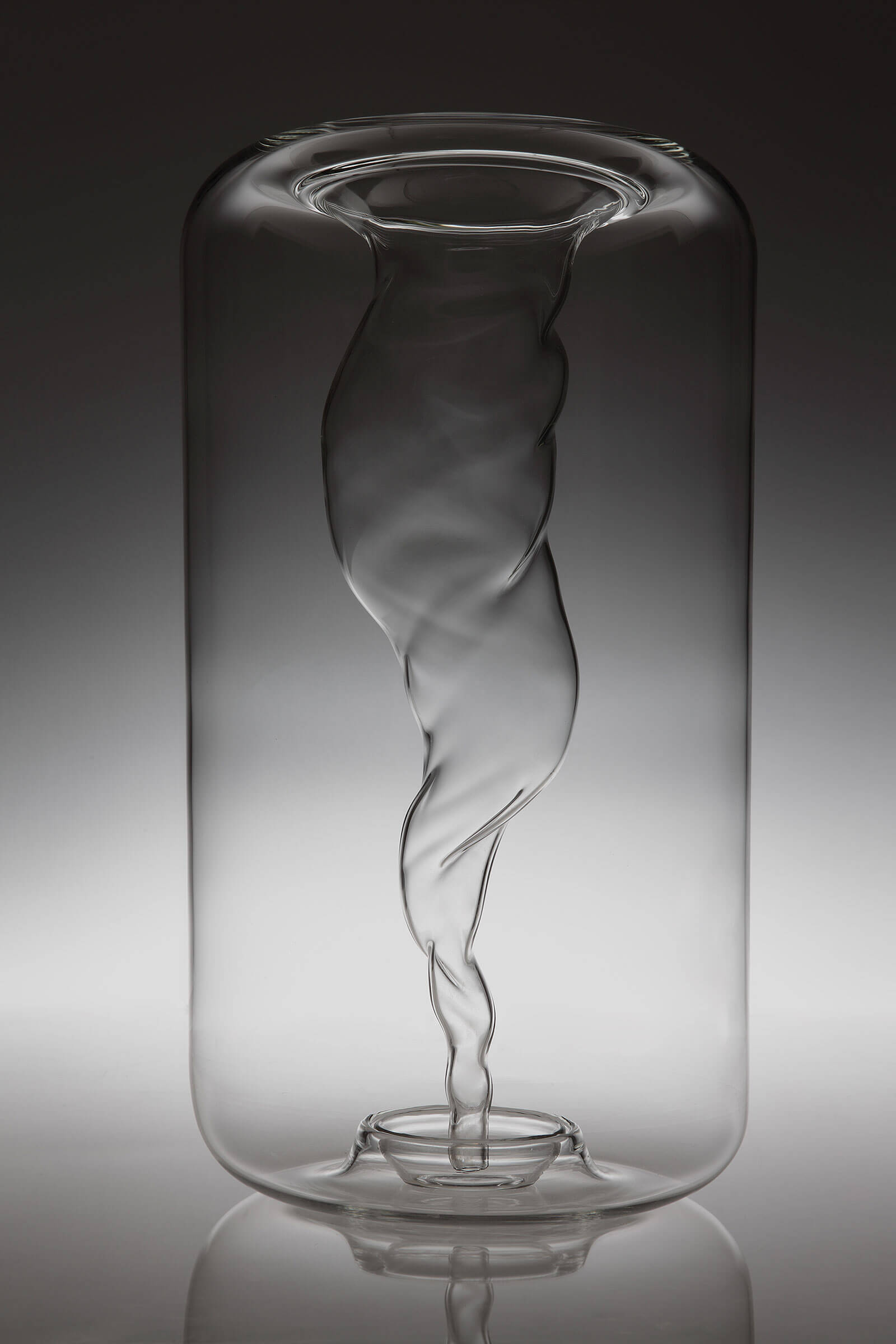
Aki+Arnaud Cooren, ‘Tourbillon’ vase, 2010
COURTESY: Aki+Arnaud Cooren / PHOTOGRAPH: Joao Vieira Torres
“We try to do something that makes you see the extraordinary in the ordinary”
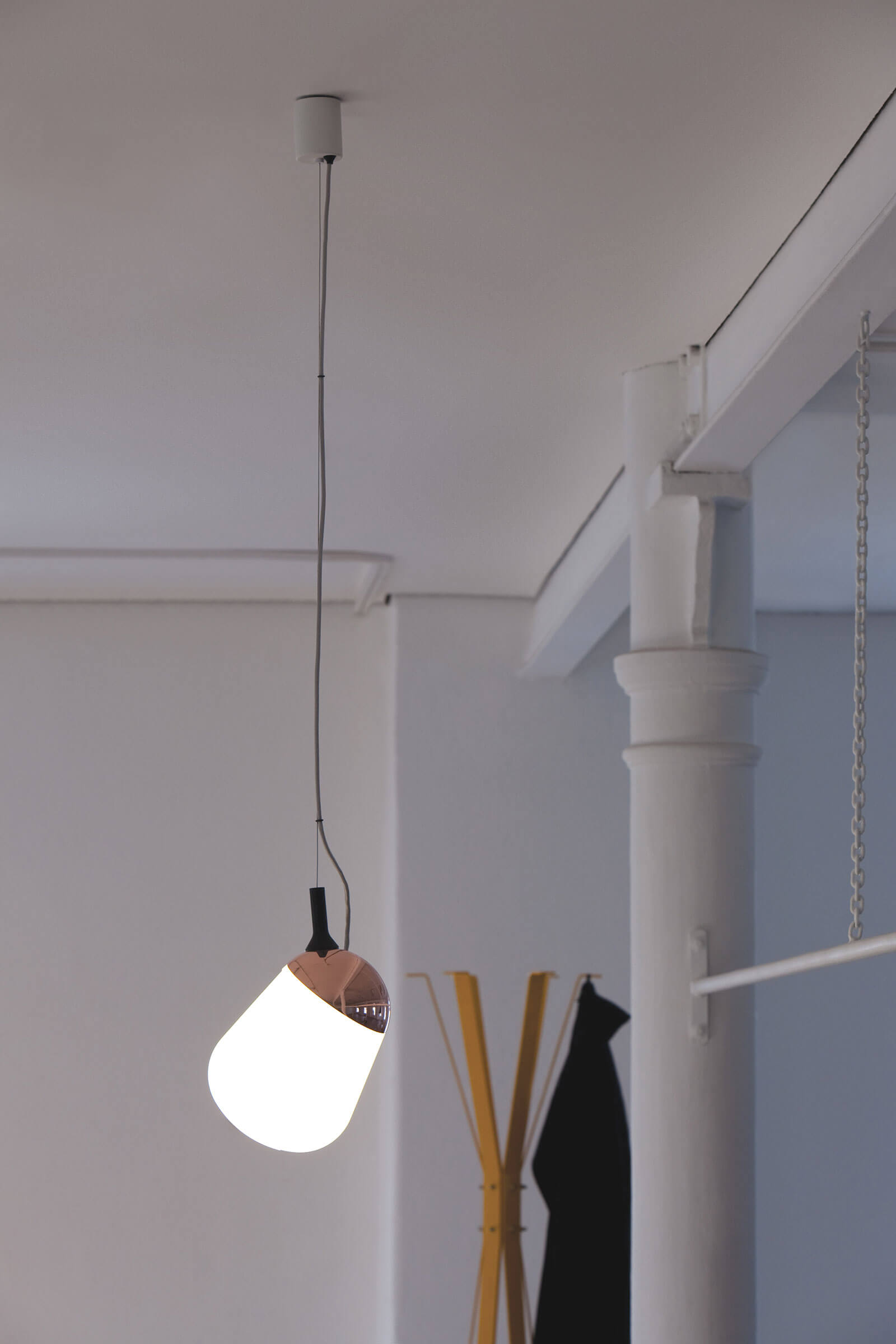
Aki+Arnaud Cooren, ‘Hippo’ for Vertigo Bird, 2011
COURTESY: Aki+Arnaud Cooren / PHOTOGRAPH: Vertigo Bird
“Being a female and male duo is a power for us. The difference makes something interesting”
Aki+Arnaud Cooren (Arnaud): We never do the same thing twice. We always try to confront new things. It takes a lot of energy but we learn a lot, and we’re really happy with that. This is the first show with Carpenters Workshop Gallery. It took us a few years to find out how, technically, to achieve what we wanted for this show. We knew how to make one piece, but to repeat the process twelve times, more or less the same way, was more complicated. The imprint of textile gives both a positive and negative, and the surface is curved, so to get the imprint on the convex side is difficult but to get the imprint on both sides is really, really complicated. You need to practice a lot … and to know when to stop.
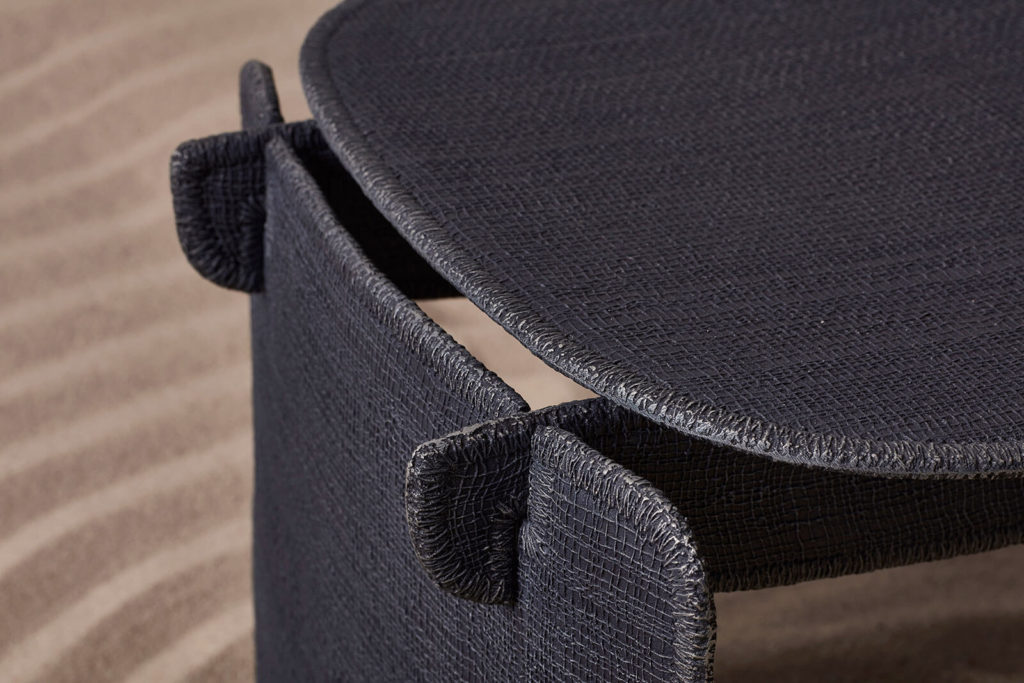
Aki+Arnaud Cooren, ‘Petit Tabouret Bas AAA’, 2019 (detail)
COURTESY: Carpenters Workshop Gallery / PHOTOGRAPH: © MarkCocksedge
Aki+Arnaud Cooren (Aki): It was a challenge, but we also had a lot of fun. Basically, this technique used with aluminium has been done for centuries, but what is new is the relief of the imprint of the textile on both sides and the imprint of the sewing stitch on the border.
Aki+Arnaud Cooren (Arnaud): Aki’s father is experimenting with the same technique with some new pieces of jewellery. We made the master here, in Paris, and sent it to Tokyo. Then they sent us back some prototypes. It’s fun because we are working on two different scales at the same time – one for jewellery and one for furniture. Those two techniques are completely different and they each respond to each other.
Aki+Arnaud Cooren (Aki): We appreciate team working. We are not alone. That is the interesting part. Also, we like to have a contrast within a collection between the soft and the hard: the softness of the fabric and the hardness of the aluminium, for example. Contrast is important to us. We like to move people out of their sensory comfort zone, in order to feel their life and to be fully alive.
Aki+Arnaud Cooren (Arnaud): If you feel like you are on the alert, you feel like a living animal. We want people to feel alive. Our ‘Tiss-Tiss’ piece is comfortable but not as expected: when you touch it it is hard, when you look at it it is soft. There is a small moment of shock or surprise in between – the small border between art and plastic things.
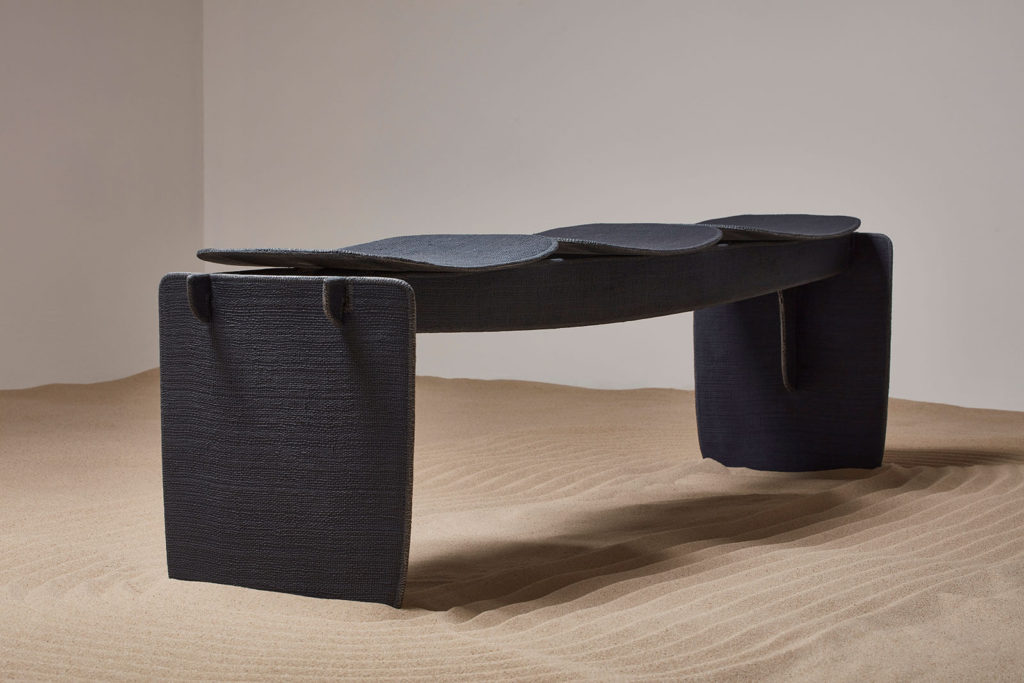
Aki+Arnaud Cooren, ‘Tiss-Tiss Banc 3 Assises’, 2019
COURTESY: Carpenters Workshop Gallery / PHOTOGRAPH: © MarkCocksedge
TDE: Are you keen to show in a gallery space?
Aki+Arnaud Cooren (Arnaud): From the start, as an art student, I wanted to put things in nature, or in the street. Twenty years later, we are working with galleries. For me, the gallery is a laboratory where you can experiment with techniques that nobody has tried, where you can experiment for production. And from production we also learn to do things for galleries. There is always an interaction between things that are unconnected.
Aki+Arnaud Cooren (Aki): We have made the ‘Tiss-Tiss’ chair in this way because function is important for us. Although we are showing this in a gallery, it is primarily furniture and that is important to us. We are inspired by the Mingei movement, in Japan, and the idea of the beauty of the everyday. I grew up knowing Keisuke Serizawa, the textile artist, who was a leading figure in the Mingei movement. In 1956 he was designated a Living National Treasure in Japan. He was my father’s master in silk screen and textile.
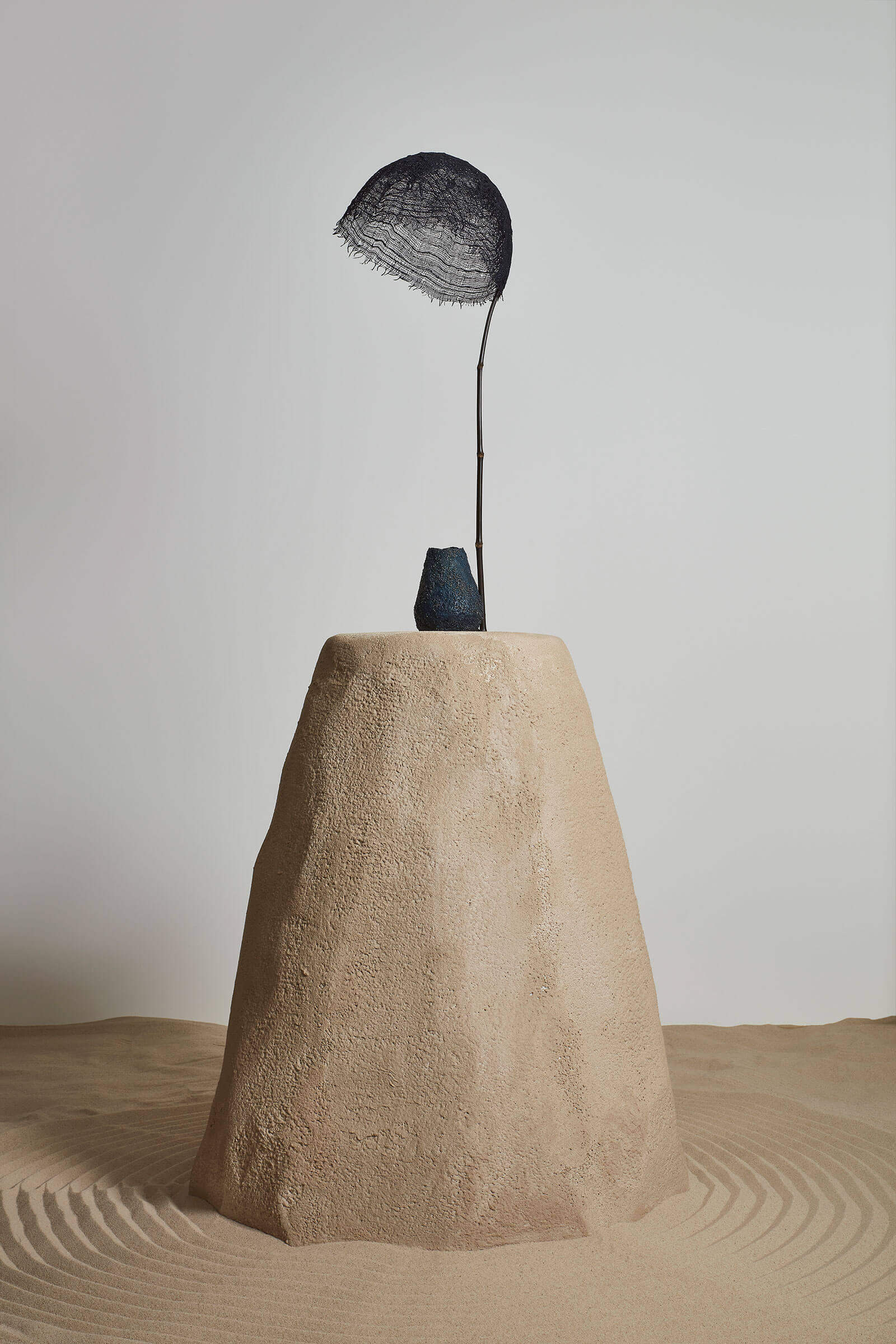
Aki+Arnaud Cooren, ‘Ishigaki Lamp #1’, 2021
COURTESY: Carpenters Workshop Gallery / PHOTOGRAPH: © MarkCocksedge
TDE: How do you work creatively? Do you split the work, do your skills overlap and complement, or are you polar opposites?
Aki+Arnaud Cooren (Arnaud): I guess we have a dialogue. I am the door opener and Aki is the dreamcatcher – we talk together and by talking we decide. Sometimes, after a long discussion, we change our minds. What we do together is bigger than us, so we have to invest a lot of energy. We try to do something that makes you see the extraordinary in the ordinary.
Aki+Arnaud Cooren (Aki): The way we work is more like ping pong.
Aki+Arnaud Cooren (Arnaud): I ask her a question every five minutes. Even if she is working on an Excel spreadsheet and I’m working on 3D, when I have a problem with the 3D, I ask Aki. Even though she never works on 3D she will come and sort it out. Basically, whenever I am stuck, Aki comes, that way we don’t lose energy.
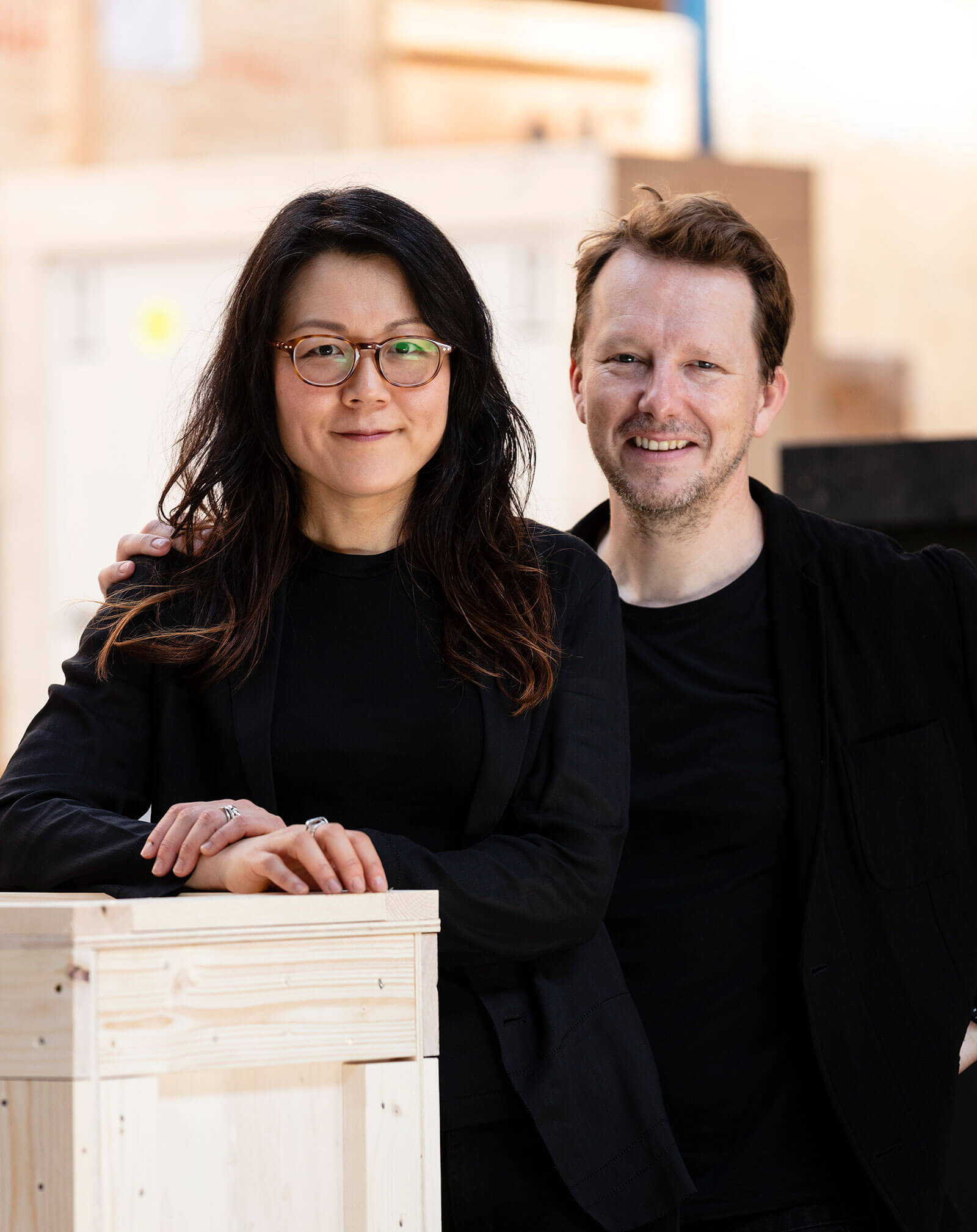
Aki+Arnaud Cooren
COURTESY: Aki+Arnaud Cooren/ PHOTOGRAPH: Gwen Le Bras
TDE: What about friction?
Aki+Arnaud Cooren (Arnaud): Of course, it happens after twenty years together!
Aki+Arnaud Cooren (Aki): But we are together because we have something between us.
Aki+Arnaud Cooren (Arnaud): It is never about one person’s ego – we just try to give the project the best chance.
Aki+Arnaud Cooren (Aki): We are very hard on ourselves, very exigent. All that exists is impermanent and nothing lasts. We believe that. Everything is moving and everything is for one time only. This is now. Not tomorrow. Not yesterday. We have to seize that. But we are not hurried.
Aki+Arnaud Cooren (Arnaud): Normally, when we draw something it appears six or seven years afterwards. We don’t want to do something that is making a noise, we want to do something that is very discreet, but something that is entirely as we want it.
Aki+Arnaud Cooren (Aki): We also find beauty in irregularity. There is a beauty in imperfection. We see the trace of the hand. This is something we like to protect. Craftsmanship. We are not against the machine but we need to use the machine at the right moment of the process – to make the process easier, or less expensive – in order to preserve the hand afterwards.
Aki+Arnaud Cooren (Arnaud): We try to defend the original core idea of our project through the whole process of making. The rest is detail. Depending upon the context you can go ten different ways, for instance using different tools, or working with different people we have around.
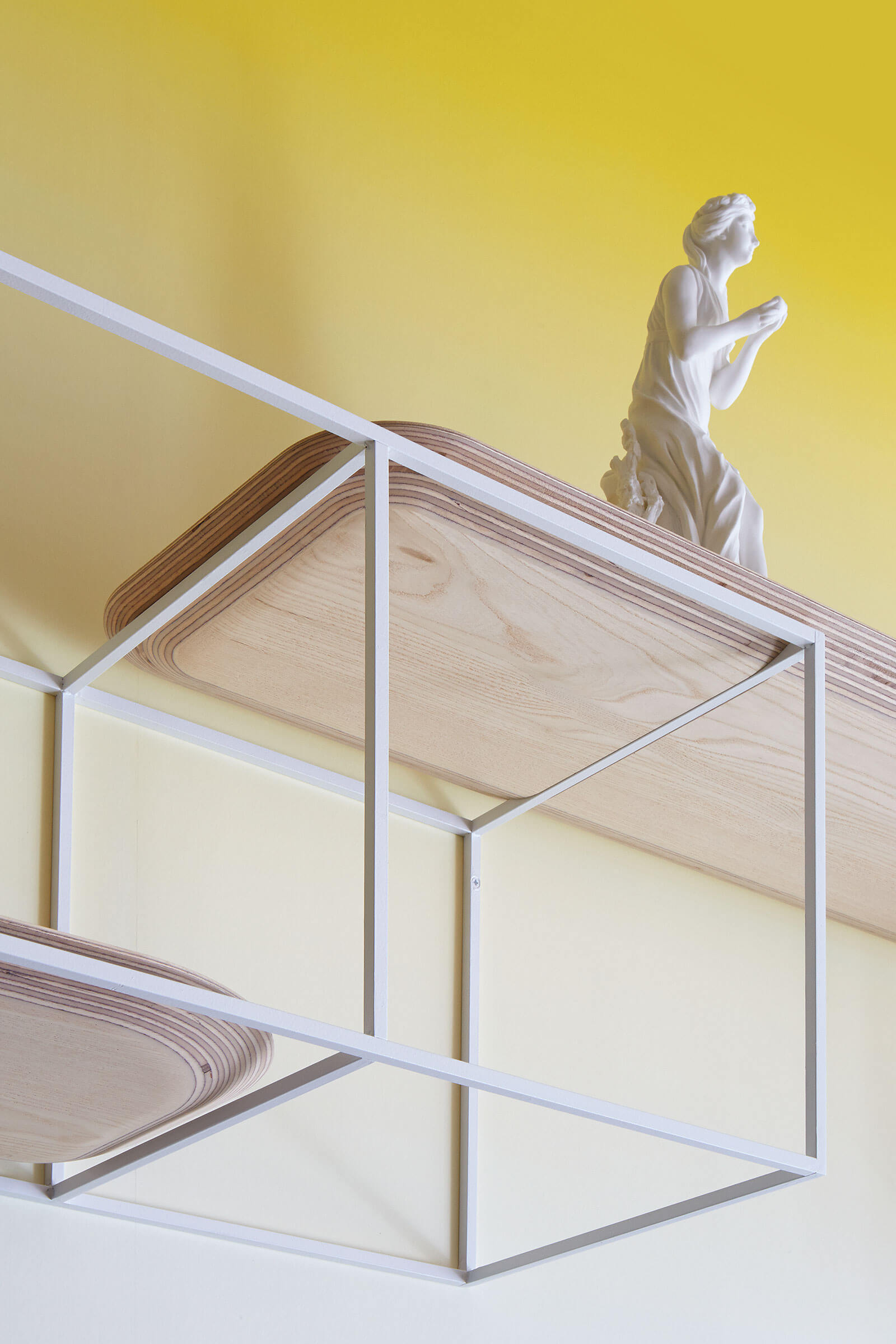
Aki+Arnaud Cooren, space design for Gallery of manufacture of Sèvres in Paris
COURTESY: Aki+Arnaud Cooren / PHOTOGRAPH: Lorenz Cugini
TDE: Is it better being two?
Aki+Arnaud Cooren (Arnaud): The point is that if we weren’t two, we would need to be five. Even so, we have to rely on accountants, technicians, acoustic specialists and so on. But as a duo we are always trying to push past impossibility.
Aki+Arnaud Cooren (Aki): The advantage of being a duo like us, female and male, is that this is a power for us. The difference makes something interesting.
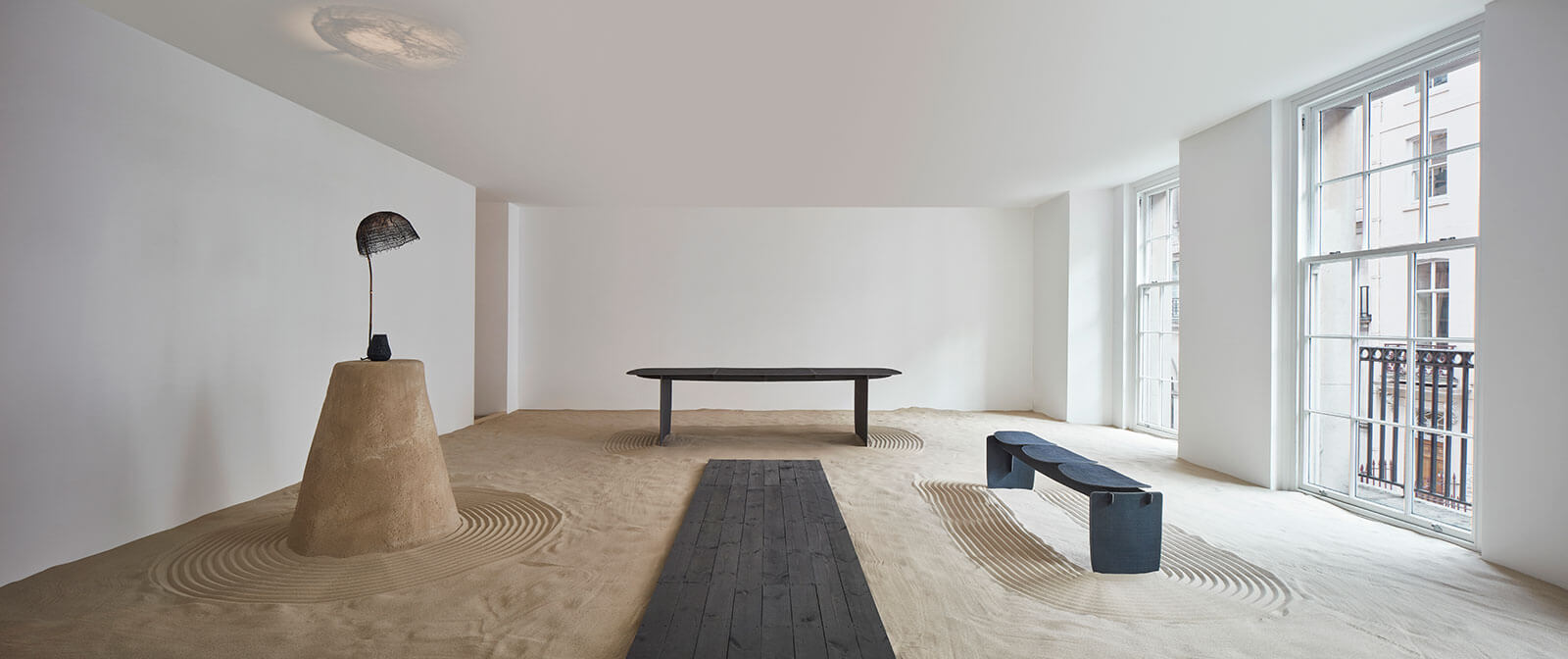
Exhibition view, Tiss-Tiss, 2021
COURTESY: Carpenters Workshop Gallery / PHOTOGRAPH: © MarkCocksedge
TDE: What are you working on at the moment?
Aki+Arnaud Cooren (Arnaud): We are working on some speakers with a French company. There is also a new project which will be revealed in September.
‘Tiss-Tiss’ at Carpenters Workshop Gallery runs from 22nd April – 11th June 2020.
